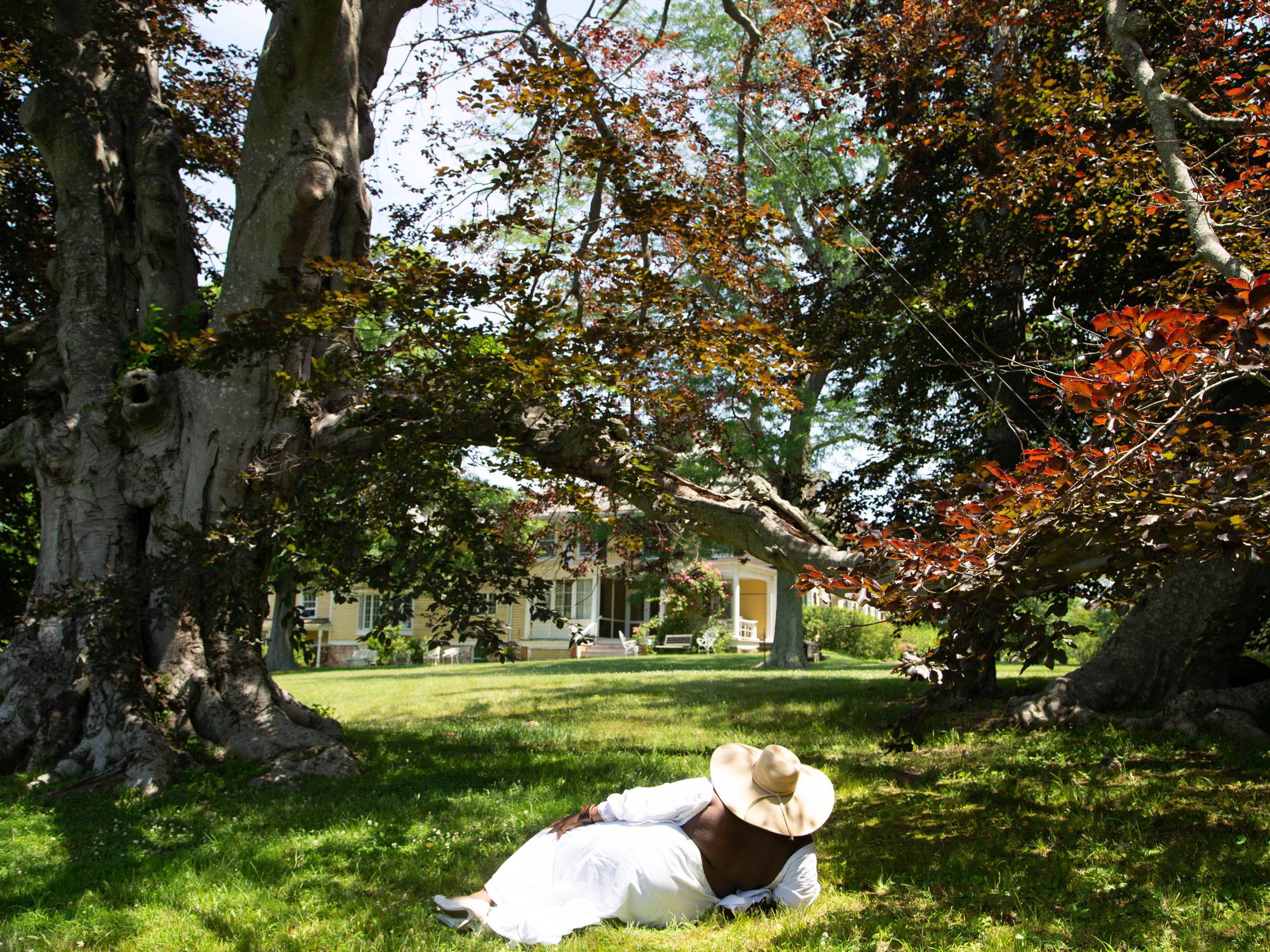On March 23, in an artists’ panel titled “Re-Placing: Marking the Landscapes and Memories of Chattel Slavery,” Assistant Professor of Theater Kyle Bass spoke on the “deeply personal,” haunting legacy the commerce of people in the 16th to 18th centuries left behind. He was joined in the discussion by artists currently featured in the Clifford and Picker art galleries: William Earle Williams, Nona Faustine, and Deborah Jack.
Instead of supplanting narratives with something entirely new, the artists on stage all have reshaped popular conceptions and misconceptions of history with considerations of the landscapes, regions, etc. where slavery lingers — a practice known as re-placing.
Bass engages in re-placing through his original plays. His 2018 work, Possessing Harriet, tells the story of Harriet Powell, an enslaved woman who escapes her owner. At a stop on the Underground Railroad, in Peterboro, N.Y., she encounters historical figures, such as Elizabeth Cady Stanton.
Bass’s work brings aspects of his own family history back to life. “I’m very much informed and inspired by what I know about my enslaved ancestors,” says Bass. “I have an enlarged photograph of a will [detailing the estate of one Captain Bennett] from 1799 that sits on my mantle. On line 14 is ‘My boy Tim.’ That Tim is my seven-times-great grandfather.”
The intersection between Bass’s personal story and the retelling of history is brought to the stage in Possessing Harriet. After one performance of the show, he was reminded of the importance of re-placing.
“A white woman came out of the theater. She looked at me — all she could get out of her mouth was ‘I’m from Peterboro,’ and she fell weeping into my arms. I understood, then, the power of place presented in the medium of theater, and that also, she and I shared something across time.”
Where Bass creates characters on a set, Williams captures moments on a camera. His photographs of black-and-white places, collected in a 43-photo portfolio titled A Wicked Commerce: The U.S. and the Atlantic Slave Trade, do not show people — they show empty settings related to Civil War history. But in this absence, there is life.
“There are always two people that are in all of my photos,” says Williams. “One is me, and the other is the person looking at them. It’s within that slippery surface that the viewer takes on what I’m showing them.”
A walk through Williams’ Picker exhibit leads into Faustine’s “White Shoes,” where she too uses a camera to reckon with the history of enslaved people. Her exhibit explores the themes of Black motherhood and body politics, with her own image as the centerpiece of each photo.
In a stand-out from the collection, Faustine stands naked, her hands shackled, in a New York City intersection. It’s a location where slaves were once bought and sold. “I put myself in the work because I realize that I am the archive,” says Faustine. “All that history and the people in my family that came before me … they didn’t have a voice. I need to be front-and-center in telling that story.”
Storytelling is a theme in Bass’ courses, too. In the fall of 2023, he will continue to teach students the art of playwriting, which he has previously offered alongside a course on narrative screenplay writing. In his craft, he pays special attention to the rhythm of words.
“I’ll hear a melody and want to replicate it as language,” says Bass. “If the dialogue is melodious, the meaning that it carries gets into us in a deeper way.”
The sound and sensation of language resonated with panelist Deborah Jack, who described her work’s connection to living history and rhythm. Her Clifford Art Gallery exhibit “...sometimes the aftermath is the storm…” can be heard in the entrance of Little Hall. When one enters the exhibit, one hears a series of piano-backed videos of the crashing waves of Caribbean history.
“Sound opens up another layer of understanding, the same way that silence does,” says Jack.
Artists Jack, Williams, Bass, and Faustine are all storytellers pointing to the places where chattel slavery lived and lingers.
“I believe all of us here were chosen to do the work we do,” says Faustine. “Someone planted that seed in us to never forget.”


